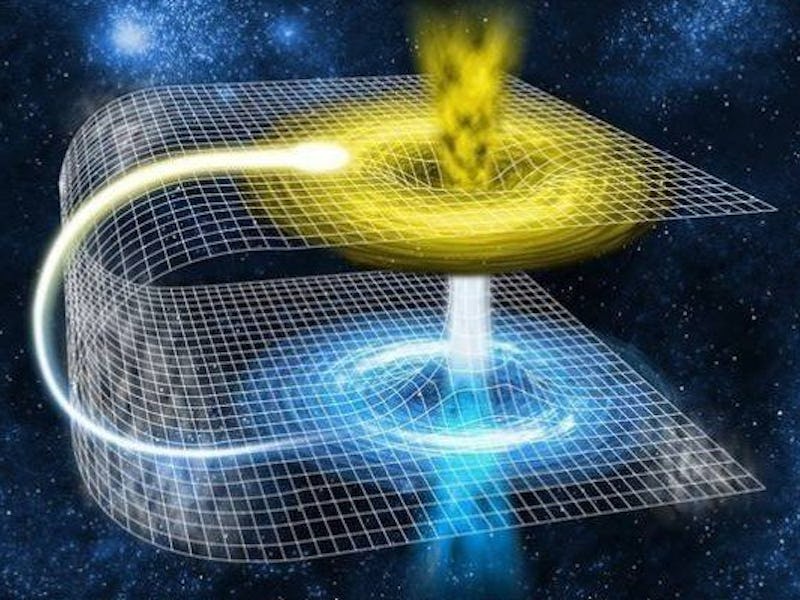Retrocausality Is the Key to Time Travel. What the Hell Is Retrocausality?
Cause always leads to effect — except, of course, in particle physics.

Since you first started learning about the world, you’ve known that cause leads to effect. Everything that’s ever happened to or near you has reiterated this point, making it seem like a fundamental law of nature. It isn’t.
It is, in fact, possible for an event to occur before its causal factors have manifested or happened. This isn’t how appliances work — you don’t have to worry about will have having left the oven on — but it is how particle physics works. It’s also the key to explaining how time travel, under the laws of quantum physics, could operate.
Retrocausality, or reverse causality, is the idea that an effect can happen before its cause. It’s often used as a thought experiment by scientists considering the philosophical underpinnings of physics, and whether the future can affect the present the same way the present affects the future.
There are a lot of time-independent parts of quantum mechanics that leave open the possibility that particles or information — like the hypothetical tachyon particle that always moves faster than light — can travel back in time.
Retrocausality is used to explain several different strange physics phenomena. The most arguably famous has to do with the Wheeler-Feynman absorber theory, developed by the renowned John Archibald Wheeler and Richard Feynman. It’s a bit complicated, so the quick-and-dirty version is that the theory explains how a special type of wave (or lack thereof) in a certain quantum equation would work so that you don’t have an instance where a charged particle has to act on itself (which would, in normal circumstances, lead to an infinitely-driving self-force).
Scientists thinking about how retrocausality can explain particle time travel specifically avoid logical contradictions like the grandfather paradox (where a future effect negates its cause and results in a dead grandfather and genetically disconnected grandchild). So we don’t have to get into a lot of sticky situations where things don’t add up.
The theory instead proposes that a positron is an electron moving backward in time so that they have a positive charge. If this is true, it explains positron-electron annihilation not as an act of creation and destruction, but actually as a simple change in direction of moving particles through a single dimension — in this case, the dimension of time. The annihilation of both particles is, in essence, an event that happens prior to the cause (the electron moving backward).
Time travel, therefore, would essentially be an object’s particles moving in reverse direction such that it takes on an opposite charge.
Retrocausality has also been suggested as being possible in extreme spacetime situations, like traversable wormholes. Closed timelike curves could create reverse causal situations where something that’s observed in the present is the result of exotic matter behaving a certain way in the future. So if wormholes might indeed play a role in helping future humans move through vast distances of spacetime, it could very well be because of events that haven’t even happened yet.
None of this can actually explain the practical things that happen in our everyday lives. If you act like an asshole and you start blaming it on future events, you’re not being clever — you’re just being more of an asshole. Show an actual instance of time travel via reverse moving particles, and you’ll have a good excuse for getting away with being an asshole.